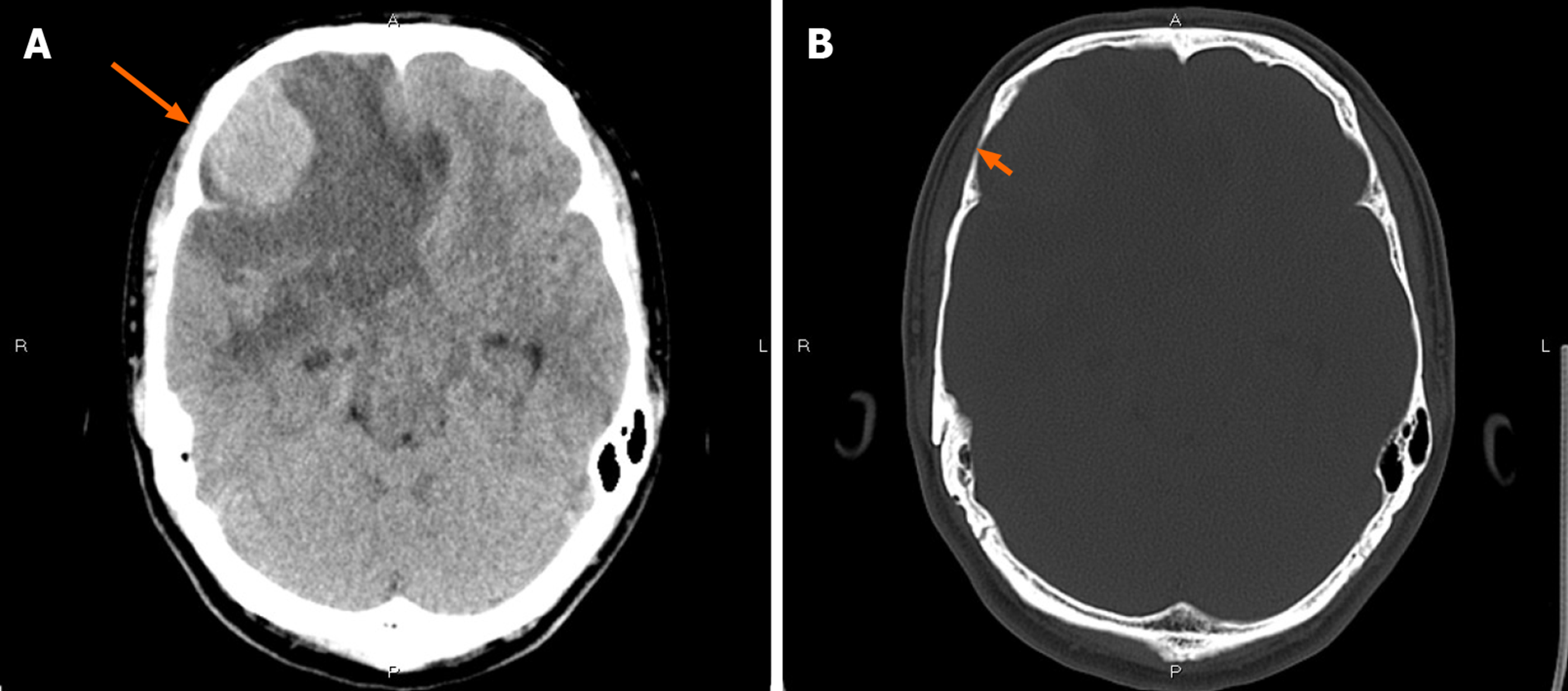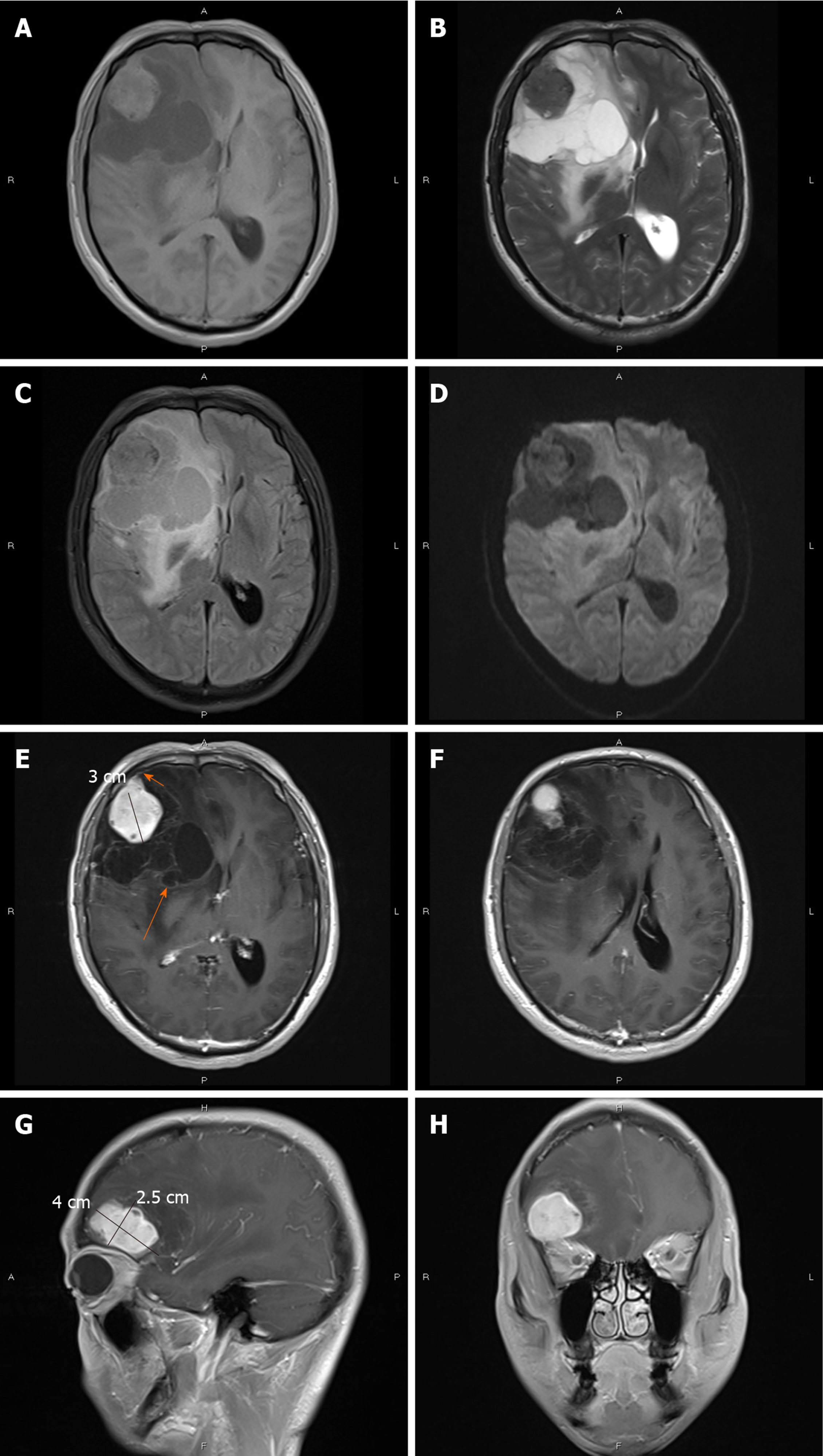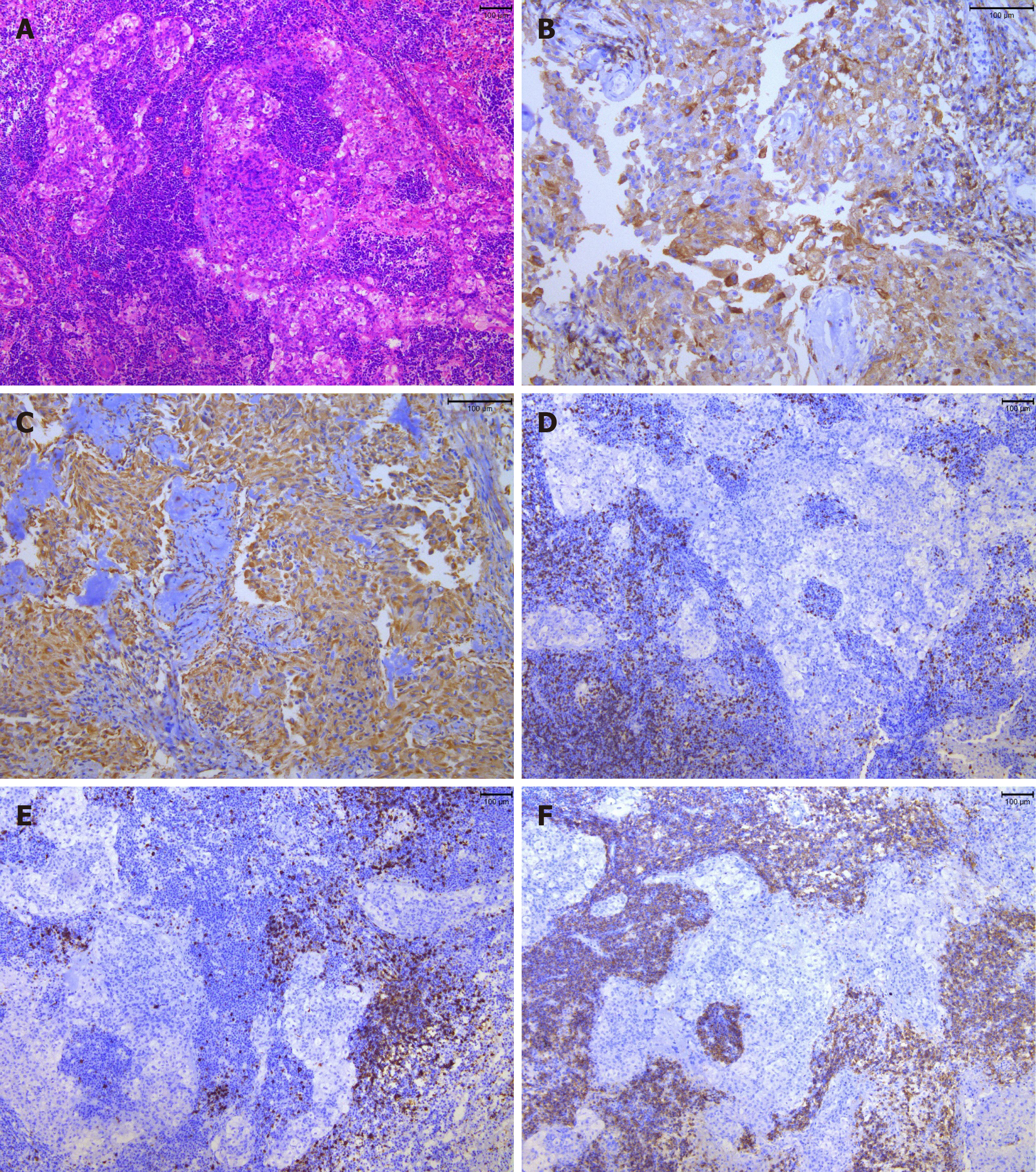Copyright
©The Author(s) 2020.
World J Clin Cases. Sep 26, 2020; 8(18): 4272-4279
Published online Sep 26, 2020. doi: 10.12998/wjcc.v8.i18.4272
Published online Sep 26, 2020. doi: 10.12998/wjcc.v8.i18.4272
Figure 1 Computed tomography findings.
A: Non-contrast computed tomography showed an irregular hypodense and isodense mixed mass in the right frontal lobe (long arrow), with obvious peritumoral edema around it; B: Bone window showed that the right frontal bone became thin (short arrow).
Figure 2 Magnetic resonance imaging findings.
Magnetic resonance imaging showed an irregular, cystic solid mass with surrounding edema in the right frontal lobe. The solid part was approximately 4 cm × 3 cm × 2.5 cm. A: The solid part and cystic wall of the mass exhibited slight hyperintensity on T1-weighted imaging (T1WI); B: Hypointensity on T2-weighted imaging; C: Isointensity on fluid attenuated inversion recovery; D: Diffusion-weighted imaging. Several spots of hypointensity on T1WI and hyperintensity on T2-weighted imaging; E-H: Gadolinium-enhanced T1WI showed that the solid part and cystic wall (long arrow) were strongly enhanced, with dural attachment and dural tail sign (short arrow).
Figure 3 Microscopic characteristics of the tumor tissue.
A: Hematoxylin and eosin staining (100 ×) showed multiple nests of meningothelial cells and syncytial tumor cells arranged in sheets or weaving. The size was consistent, and nuclear heterotypes were not obvious. Tumor stroma with massive lymphocytic and plasmocytic infiltration, and lymphoid follicular formation was identified in a local focus; B: Immunohistochemical staining revealed that the tumor cells were positive for epithelial membrane antigen (200 ×); C: Vimentin (200 ×); D: T lymphocytes were positive for CD3 (100 ×); E: B lymphocytes were positive for CD20 (100 ×); F: Plasmocytes were positive for CD38 (100 ×).
- Citation: Gu KC, Wan Y, Xiang L, Wang LS, Yao WJ. Lymphoplasmacyte-rich meningioma with atypical cystic-solid feature: A case report. World J Clin Cases 2020; 8(18): 4272-4279
- URL: https://www.wjgnet.com/2307-8960/full/v8/i18/4272.htm
- DOI: https://dx.doi.org/10.12998/wjcc.v8.i18.4272











